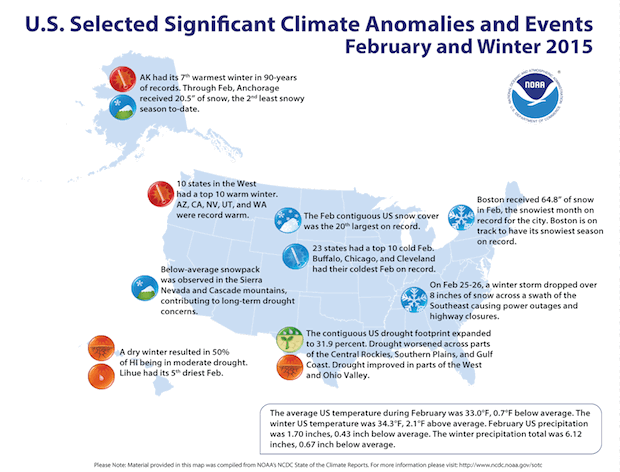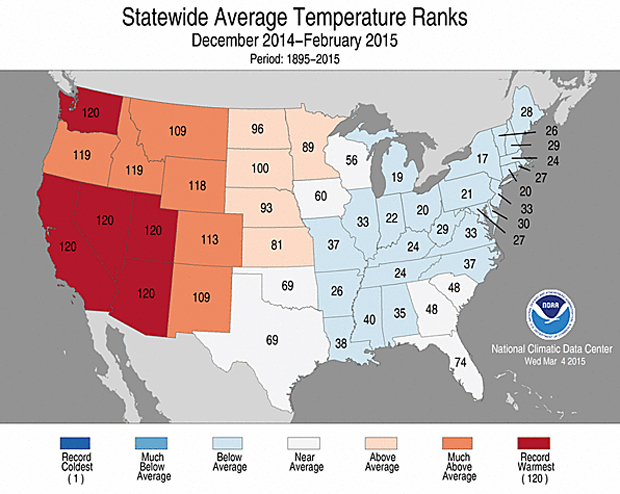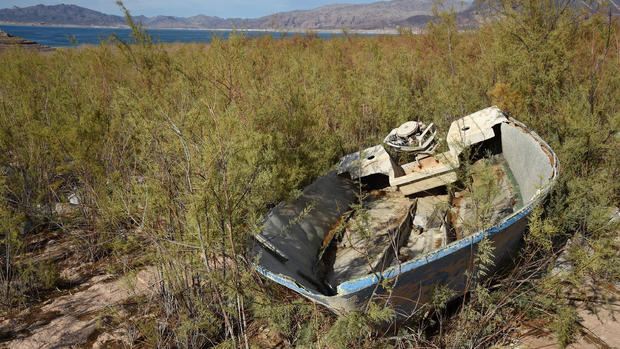Winter was warmer than average despite brutal cold in East
It may be hard to believe if you've been suffering through brutal winter weather in parts of the country, but temperatures across the United States this winter were above average, as the warmth in the West trumped the frigid cold in the East.
The average temperature in the lower 48 states was 34.3°F, or 2.1°F above the 20th century average, according to National Oceanic and Atmospheric Administration, making this the 19th warmest winter on record. The month of February bucked the trend, however, with an average temperature of 33.1°F, or 0.7°F below the 20th century average.
The big chill in the East was borne out by the NOAA numbers, which showed many Northeastern states had their second coldest February on record. Several individual cities also endured record cold temperatures, while snowfall records were set in many places. Boston had its snowiest month in history, with 64.8 inches piling up in February.
It couldn't have been a more different story out West, which was engulfed in record warm temperatures this winter.
Arizona, California, Nevada, Utah, and Washington each had their warmest winter on record. In California, the winter temperature beat the previous seasonal record that occurred just last year by 1.5°F. An additional five states, from the Rockies to West Coast, had one of their 10 warmest winters on record.
It was also a drier-than-average winter nationwide, with precipitation totals 0.67 inches below average, making it the the 27th driest on record. Even with all that snow in places like Boston, no state had winter precipitation totals that ranked among the 10 wettest on record.
The drier conditions have added to concerns about long-term drought in the West, which NOAA said has been compounded by a lack of mountain snowpack.
California is in the midst of a historic drought that has dried up lakes, hit struggling farmers and prompted authorities to institute draconian water restrictions in some places.
According to the March 3rd U.S. Drought Monitor report, 31.9 percent of the contiguous U.S. is in a drought, up from 28.4 percent at the beginning of February. Conditions worsened across parts of the Central Rockies, Southern Plains, and central Gulf Coast. Drought conditions improved in parts of the West, Southern Rockies, Midwest, and Ohio Valley. Abnormally dry conditions developed across central parts of Alaska.
The NOAA report comes in the wake of 2014 temperatures which proved to be the hottest on record. These warming trends for the most part have been blamed on climate change, largely caused by the continued burning of fossil fuels like coal and oil.


